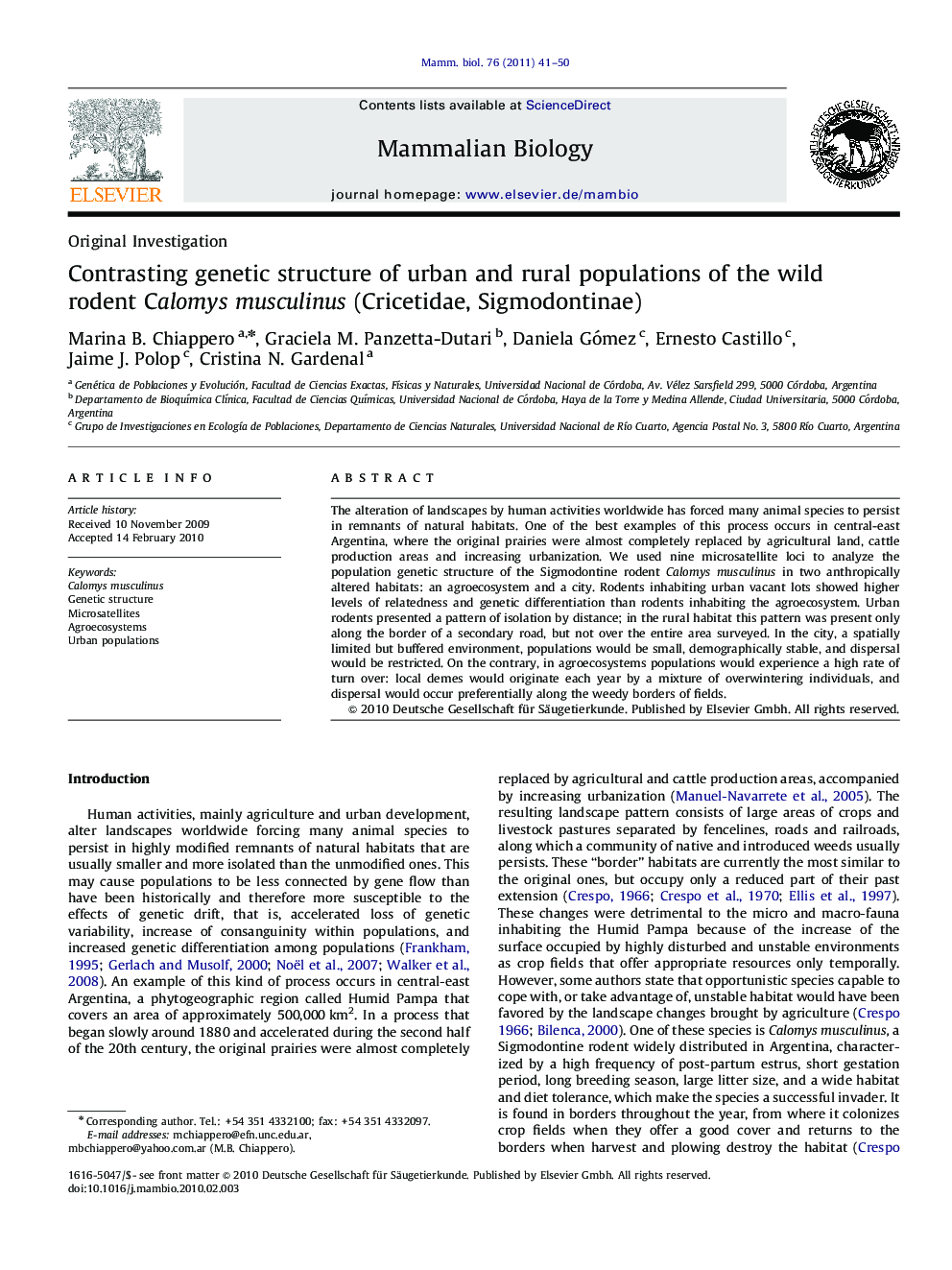| Article ID | Journal | Published Year | Pages | File Type |
|---|---|---|---|---|
| 2193973 | Mammalian Biology - Zeitschrift für Säugetierkunde | 2011 | 10 Pages |
The alteration of landscapes by human activities worldwide has forced many animal species to persist in remnants of natural habitats. One of the best examples of this process occurs in central-east Argentina, where the original prairies were almost completely replaced by agricultural land, cattle production areas and increasing urbanization. We used nine microsatellite loci to analyze the population genetic structure of the Sigmodontine rodent Calomys musculinus in two anthropically altered habitats: an agroecosystem and a city. Rodents inhabiting urban vacant lots showed higher levels of relatedness and genetic differentiation than rodents inhabiting the agroecosystem. Urban rodents presented a pattern of isolation by distance; in the rural habitat this pattern was present only along the border of a secondary road, but not over the entire area surveyed. In the city, a spatially limited but buffered environment, populations would be small, demographically stable, and dispersal would be restricted. On the contrary, in agroecosystems populations would experience a high rate of turn over: local demes would originate each year by a mixture of overwintering individuals, and dispersal would occur preferentially along the weedy borders of fields.
